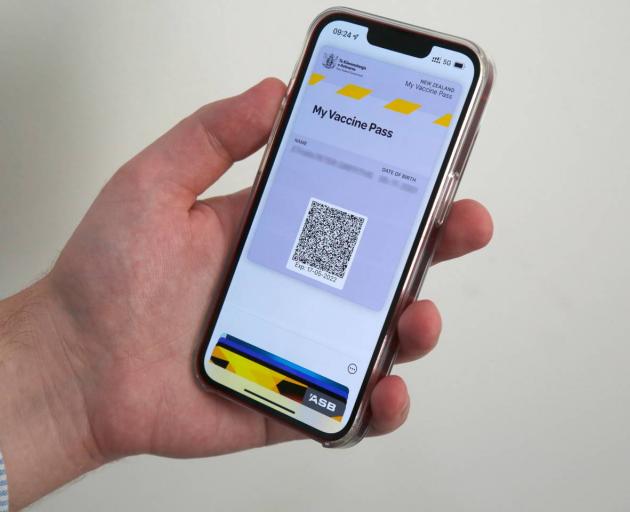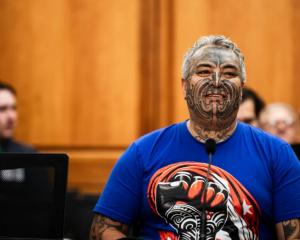
It's also the first time we have had to grapple with vaccine passes, which prove that someone has received two doses of a Covid-19 vaccine.
Here's the latest on when you'll need a pass and other key information about the traffic light system.
When do I need a vaccine pass?
The main area where Kiwis are likely to need to show their vaccine pass is at hospitality venues, like bars and cafes.
Under the orange setting, there are no number limits for venues using vaccine passes. The limit for venues not using passes is 50.
Under the red setting, these establishments are still required to separate customers, keep them seated and limit capacity to 100 people while using vaccine passes.
Some businesses, including gyms and hairdressers, along with large-scale events, may want to see vaccine passes under the orange setting. They also can't be open under the red setting unless using the vaccine pass.
Vaccine passes are not required at the following places: Supermarkets, pharmacies, health and disability services, petrol stations, public transport, schools and early learning service providers, and housing support services.
Are bar or cafe owners required to scan every single pass?
It's still a bit unclear. That was the expectation when the traffic light system was being set up but Covid-19 Minister Chris Hipkins suggested last week that it may not be practicable for every person's vaccine pass to be scanned.
At this stage, it is not mandatory for a business to check a person's vaccine pass using the verifier app. Some rely on sighting a person's pass before allowing them to enter.
Those operators which are required to - but refuse to - enforce vaccine passes could face fines of up to $15,000.
What about when I'm getting takeaways
Good on you for being so eager to share your vaccine status with your local fish & chip shop. Under the orange setting or if you're picking up food in a click-and-collect setting (like in the old level 3 alert level system) you can keep that vaccine pass in your pocket or purse.
However, if businesses choose to open up their dine-in capability, they must enforce vaccine passes.
What about heading in for some retail therapy?
Retail businesses aren't required to use vaccine passes for customers.
However, they can choose to add that requirement if established as necessary through a health and safety assessment.
For those without mandatory use of vaccine passes, face coverings and physical distancing is required.
Seeing red: what on earth do the different colours mean?
• Red:
Red is the most restrictive setting and is applied to areas where action is deemed necessary to protect vulnerable communities and the health system from unsustainable hospitalisations of people with Covid-19.
Face coverings are mandatory when travelling with members of the public, in retail and to an extent in education. Public facilities and retail are open with capacity limits.
With a vaccine pass, many businesses and gathering types can grow to 100 people, including hospitality, weddings, gyms and tangihanga. Without passes, hospitality must remain contactless and the aforementioned gatherings are limited to 25 people.
• Orange:
The orange setting is intended for regions where community transmission is pressuring the health system.
The primary change at orange from red is that, with vaccine passes, there are no limits on gathering sizes for hospitality or at in-home functions, weddings, tangihanga, gyms etc.
Without vaccine passes, hospitality is still contactless while gathering size limits double to 50.
• Green:
Green is the least restrictive setting and would be used when there is limited community transmission and hospitalisations are manageable.
Face coverings are further relaxed at this point, only mandatory on flights and in some settings where vaccine passes aren't used.
Like orange, there are no limitations to businesses and gatherings which employ vaccine passes.
Without them, gathering sizes are capped to 100 people. Hospitality can return to in-person service, so long as customers are 1m separated and seated.
What level is my region in?
On November 29, Cabinet decided no region would start in green and split the country's regions into red and orange:
• Red: Northland, Auckland, Taupō and Rotorua Lakes Districts, Kawerau, Whakatāne, Ōpōtiki Districts, Gisborne District, Wairoa District, Rangitikei, Whanganui and Ruapehu Districts
• Orange: The remaining areas of the North Island and the entire South Island
When will these regional settings be reviewed?
Cabinet will review settings and provide an update on Monday (December 13). The next update will be done on January 17 before continuing on a fortnightly basis.
Determinants of traffic light settings include vaccination, the state of the health system, testing, contact tracing and case management capacity, as well as the rate and effect of virus transmission.
Will lockdowns still be used?
The new system replaces the need sudden lockdowns and restrictions of alert levels.
However, local and targeted lockdowns could still be used, but high vaccination rates mean lockdowns are no longer the main response to future outbreaks.
Can Aucklanders leave the city now it's in red?
Not yet. Aucklanders will be able to leave from 11.59pm on December 14.
To pass through the boundary, a person must be vaccinated or have evidence of a negative Covid-19 test 72 hours prior to travel if they are unvaccinated. Police will be performing spot checks along the boundary and fines could be given to those breaking the rules.












